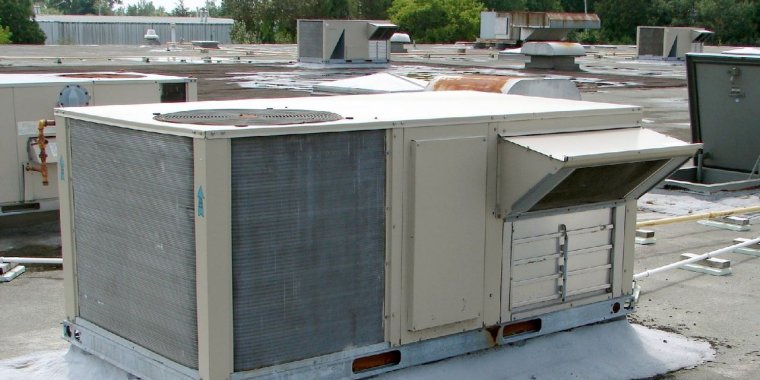| News / Science News |
Billions at risk from heat stress at home
Some 1.8–4.1 billion people living in the developing countries of South Asia, South-East Asia, Sub-Saharan Africa and Latin America are vulnerable to heat-related stress, and lack access to technology to cool their living spaces, according to new estimates.

Rooftop HVAC unit with view of fresh air intake vent. ![]()
The authors note that as health risks rise with global temperatures, the need for air conditioning is expected to add to global energy demands.
Universal access to electricity and adequate and affordable housing are prerequisites to accessing cooling technologies, and are closely linked to meeting several of Sustainable Development Goals (SDGs) mandated by the UN, the study notes.
Filling this “cooling gap” links with the SDGs on affordable and clean energy, poverty reduction, health and wellbeing, and sustainable cities and communities.
The researchers looked at the energy needed to meet cooling needs of populations exposed to heat stress by taking into account climatic conditions, type of housing, access to electricity and ownership of air conditioners.
“We estimate that between 1.8 and 4.1 billion people in the Global South — with a median of 3.7 billion for 26 degrees Celsius set point threshold and at least five days of annual exposure — are potentially exposed to heat stress in their homes,” says Narasimha Rao, co-author of the study and assistant professor of energy systems at Yale University in the United States.
Closing the cooling gap would mean a rise in energy demand of 14 per cent above current global consumption of electricity in homes, their model suggests. This demand is expected to be met mainly by using air conditioning, which is costly and environmentally damaging.
The authors note that timely policies to make air conditioning technologies efficient and affordable, and to improve the design of residential areas in order to reduce heat island effects, would benefit both the climate and development. (SciDev.Net)
YOU MAY ALSO LIKE



